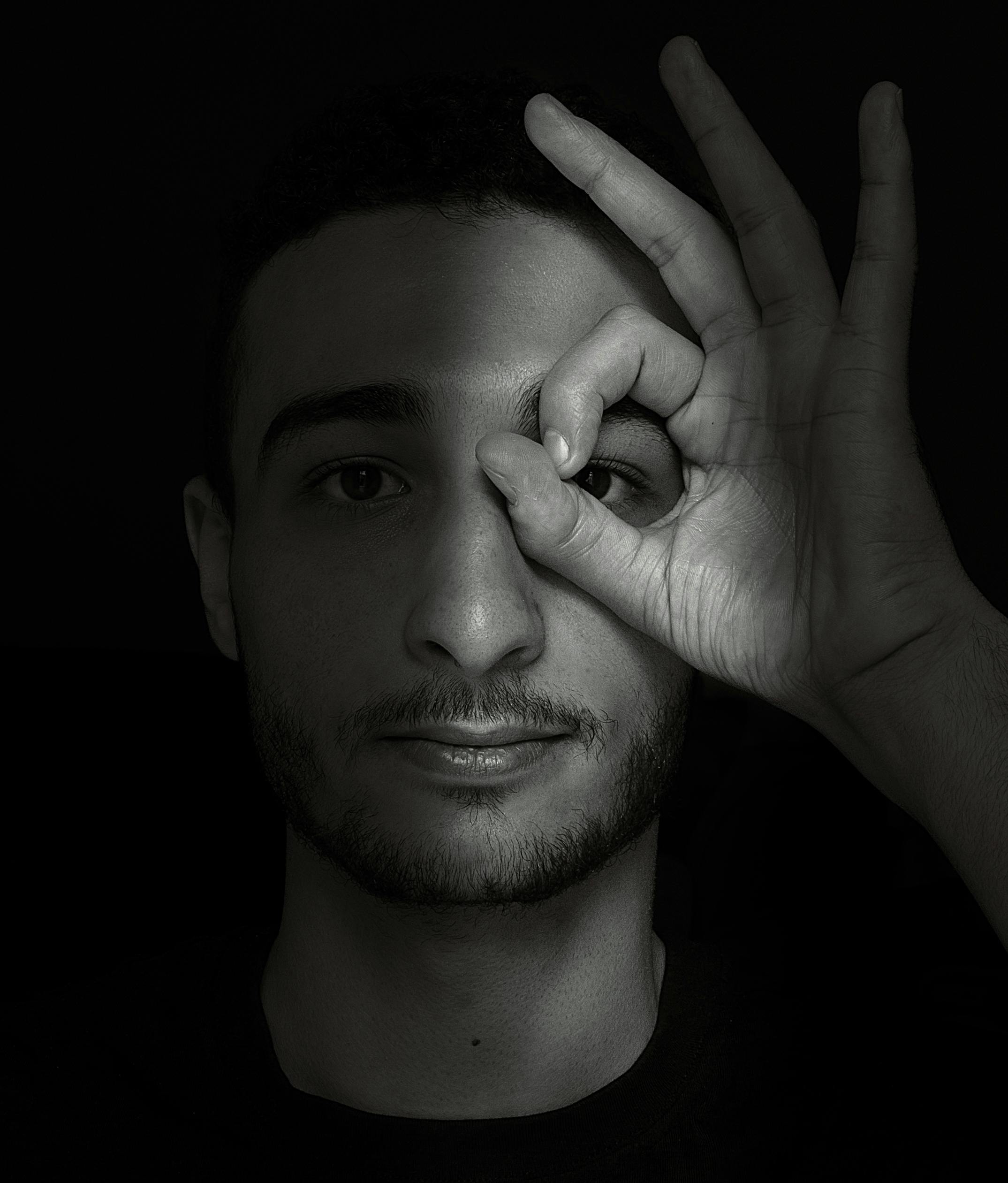If you find yourself engaged in extended observation sessions, whether for work or leisure, it is essential to prioritize the health of your eyes. With the increasing prevalence of digital screens and the strain they can put on our vision, it becomes more important than ever to take proactive measures to protect your eyes. In this article, we will explore several tips and techniques that can help you safeguard your eyes during those lengthy observation sessions, ensuring you maintain optimal eye health and prevent discomfort or potential long-term issues.

Table of Contents
Importance of Protecting Your Eyes
Your eyes are an incredibly important part of your overall health and well-being. They allow you to see the world around you and play a vital role in your daily activities. However, many people neglect to take proper care of their eyes, especially during extended observation sessions. Whether you’re working long hours in front of a computer or indulging in a binge-watching session, it’s crucial to understand the risks and take steps to protect your eyes.
Understanding the Risks
Extended observation sessions, such as staring at a screen for hours on end, can put a significant strain on your eyes. This can lead to a variety of eye-related issues, including eye fatigue, dryness, and discomfort. Additionally, prolonged exposure to blue light emitted by electronic devices can cause long-term damage to your eyes. It’s essential to be aware of these risks and take proactive measures to mitigate them.
The Impact of Extended Observation Sessions
Extended observation sessions can have a significant impact on your eye health. The strain placed on your eyes can lead to symptoms such as blurred vision, headaches, and eye fatigue. These symptoms can not only affect your ability to see clearly but also hinder your productivity and overall well-being. By taking steps to create an optimal environment and practicing good eye health habits, you can minimize the negative impact of extended observation sessions.
Creating an Optimal Environment
Creating an optimal environment for your eyes during extended observation sessions is crucial to maintaining good eye health. Here are two key factors to consider:
Proper Lighting
Ensuring that your workspace is adequately lit is essential for protecting your eyes. Avoid placing yourself in overly bright or dimly lit environments, as both can cause eye strain. Natural lighting is generally the best option, so try to position your workspace near a window. If that’s not possible, choose a well-designed desk lamp that provides even, non-glare lighting.
Adjusting Monitor Settings
Adjusting the settings on your monitor can significantly reduce eye strain. Increase the font size and contrast to make the text easier to read. Adjust the brightness and color temperature to ensure that the screen isn’t too harsh on your eyes. Many devices also offer a “night mode” that reduces the amount of blue light emitted, making it easier on your eyes during evening or nighttime use.
Ergonomics for Eye Health
Improving your workspace ergonomics can have a positive impact on your eye health. Consider the following:
Choosing the Right Chair and Desk
A comfortable chair and desk that are ergonomically designed are essential for maintaining good posture and reducing strain on your eyes and body. Ensure that your chair provides proper lumbar support and is adjustable to fit your height and sitting position. Your desk should also be at the right height to prevent you from hunching over your monitor.
Positioning Your Monitor
The position of your monitor plays a crucial role in eye health. It’s recommended to place your monitor at eye level, about an arm’s length away from your face. This ensures that you’re not straining your eyes by looking up or down. Adjust the tilt and angle of your monitor to minimize glare and reflections on the screen.
Taking Regular Breaks
Taking regular breaks from extended observation sessions is vital for giving your eyes the rest they need. Here are two practices to incorporate into your daily routine:
Following the 20-20-20 Rule
The 20-20-20 rule is a simple yet effective way to reduce eye strain. Every 20 minutes, take a 20-second break and focus on something that is at least 20 feet away. This helps relax your eye muscles and reduces the strain caused by prolonged screen time. Set a timer or use a reminder app to ensure you follow this rule consistently throughout the day.
Engaging in Eye Exercises
Eye exercises can help relieve eye strain and improve focus. Some simple exercises include rolling your eyes in a circular motion, focusing on an object near and far from you alternately, and gently massaging your temples. These exercises can be done during your break time or whenever you feel your eyes becoming fatigued.

Hydration and Nutrition
Hydration and nutrition play a vital role in maintaining good eye health. Consider the following:
Drinking Sufficient Water
Staying hydrated is essential for keeping your eyes moist and reducing dryness and irritation. Aim to drink at least 8 glasses of water a day. If you find it challenging to consume enough water, set reminders or keep a water bottle nearby as a visual reminder to stay hydrated.
Consuming Eye-Healthy Foods
A balanced diet rich in vitamins and nutrients can contribute to good eye health. Include foods that are high in antioxidants, such as leafy greens, citrus fruits, and fish. These foods can help protect your eyes from damage caused by free radicals. Additionally, omega-3 fatty acids found in fish, nuts, and seeds can support eye health and reduce the risk of age-related macular degeneration.
Using Eyesight-Friendly Devices
Investing in eyesight-friendly devices can make a significant difference in protecting your eyes during extended observation sessions. Consider the following:
Investing in Blue Light Filters
Blue light filters are designed to reduce the amount of blue light emitted by electronic devices. This can help minimize eye strain and improve sleep quality. You can invest in screen protectors or download blue light filter software for your devices. Enable these filters, especially during evening or nighttime use.
Consideration of Ergonomic Devices
There are various ergonomic devices available that can improve your overall comfort and reduce eye strain. For example, an ergonomic keyboard and mouse can help prevent repetitive strain injuries. An adjustable laptop stand or monitor riser can ensure that your screen is at the optimal height. Assess your needs and invest in ergonomic devices that suit your working style and preferences.

Protective Eyewear
Protective eyewear can provide an additional layer of defense against eye strain and potential damage. Consider the following options:
Using Anti-Glare Glasses
Anti-glare glasses, also known as anti-reflective or AR-coated glasses, are designed to reduce glare and reflections on your lenses. This can help improve visual clarity and reduce eye strain, particularly when working in environments with bright lighting or using electronic devices extensively. Talk to an optometrist about getting anti-glare glasses if you frequently experience glare-related eye discomfort.
Wearing Computer Glasses
Computer glasses are specifically designed for extended computer use. They feature lenses with a slightly different prescription than regular glasses, optimizing vision for viewing screens at a typical distance. Computer glasses can help reduce eye strain and provide a more comfortable viewing experience. Consult with an eye care professional to determine if computer glasses are suitable for your needs.
Maintaining Eye Hygiene
Maintaining good eye hygiene is crucial for protecting your eyes during extended observation sessions. Consider the following practices:
Limiting Screen Time
One of the most effective ways to protect your eyes is by limiting your overall screen time. Take regular breaks from prolonged screen use and engage in other activities that don’t require extensive visual concentration. Set boundaries and establish screen-free zones in your daily routine to give your eyes the opportunity to rest and recover.
Avoiding Eye Irritants
Be mindful of potential irritants that can cause discomfort and exacerbate eye strain. Avoid smoking and exposure to secondhand smoke, as the toxins can irritate your eyes. Keep your environment clean and free from dust, and avoid rubbing your eyes excessively. If you wear contact lenses, follow proper hygiene practices and avoid wearing them for extended periods without a break.

Getting Regular Eye Exams
Regular eye exams are essential for maintaining good eye health and detecting any potential issues early on. Consider the following:
Scheduling Routine Eye Checkups
Schedule routine eye checkups with an optometrist or ophthalmologist. These eye exams can help identify any underlying eye conditions or changes in your vision. Your eye care professional can also provide guidance on how to protect your eyes based on your individual needs.
Seeking Professional Advice
If you experience persistent eye strain or discomfort despite implementing preventive measures, seek professional advice. An eye care professional can assess your specific situation and provide personalized recommendations and treatment options if necessary.
Developing Good Eye Health Habits
Developing good eye health habits is essential for protecting your eyes during extended observation sessions. Consider the following practices:
Being Mindful of Eye Strain Symptoms
Be aware of common symptoms of eye strain, such as blurred vision, dryness, itching, and headaches. When you notice these symptoms, take immediate action to rest your eyes, adjust your environment, and practice eye exercises. Being mindful of these symptoms can help you take proactive steps to prevent further eye strain and potential eye damage.
Practicing Proper Blinking
Blinking is a natural way to moisturize and refresh your eyes. However, during extended observation sessions, many people tend to blink less frequently, leading to dry and irritated eyes. Make a conscious effort to blink regularly, especially when focusing intently on a screen. Consider using artificial tears or a humidifier in your workspace to further alleviate dryness.
By understanding the risks, creating an optimal environment, practicing good ergonomics, taking regular breaks, maintaining hydration and nutrition, using eyesight-friendly devices, wearing protective eyewear, maintaining eye hygiene, getting regular eye exams, and developing good eye health habits, you can ensure the health and well-being of your eyes during extended observation sessions. Prioritize the protection of your eyes, as they are invaluable to your overall quality of life.

